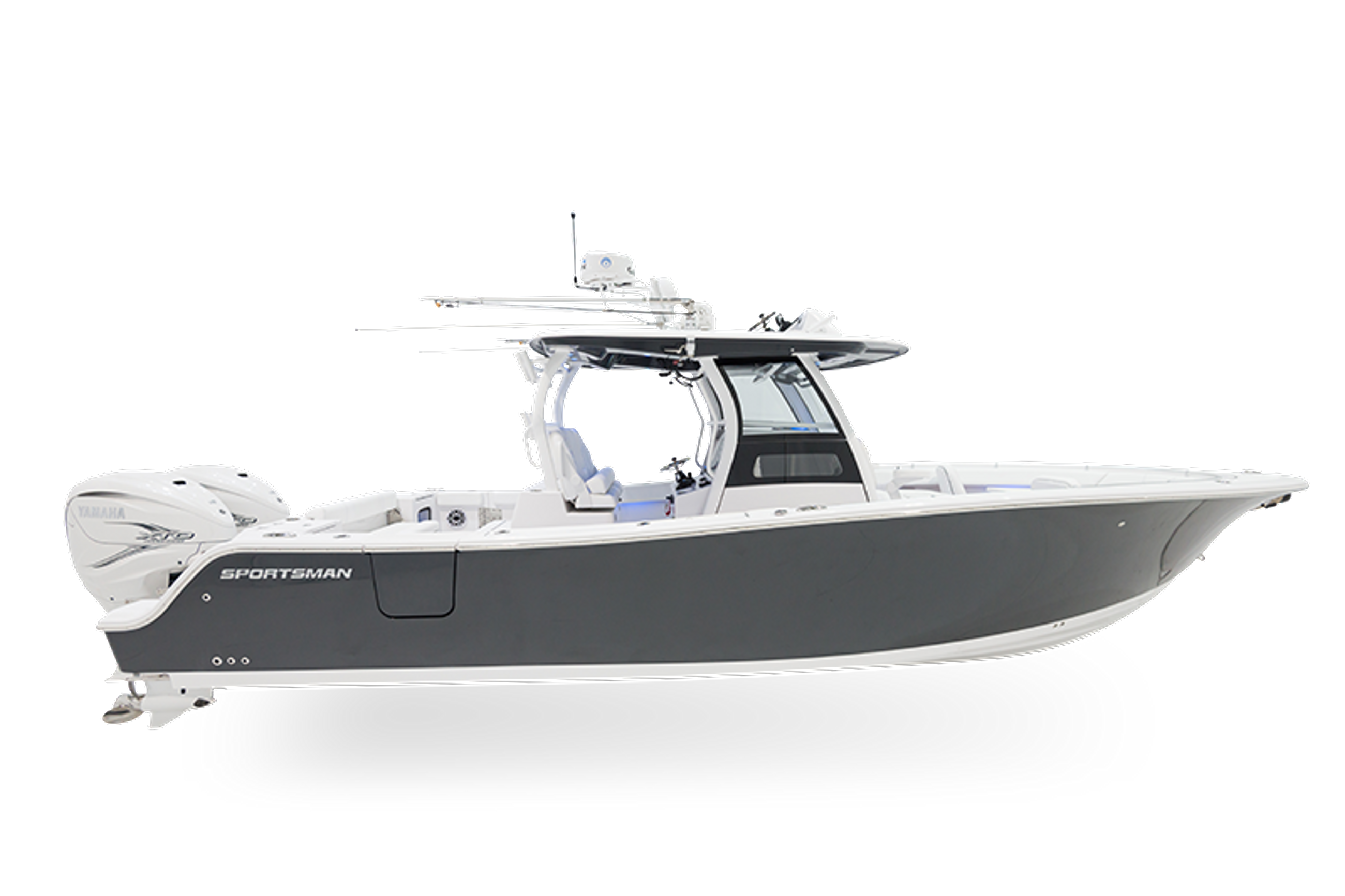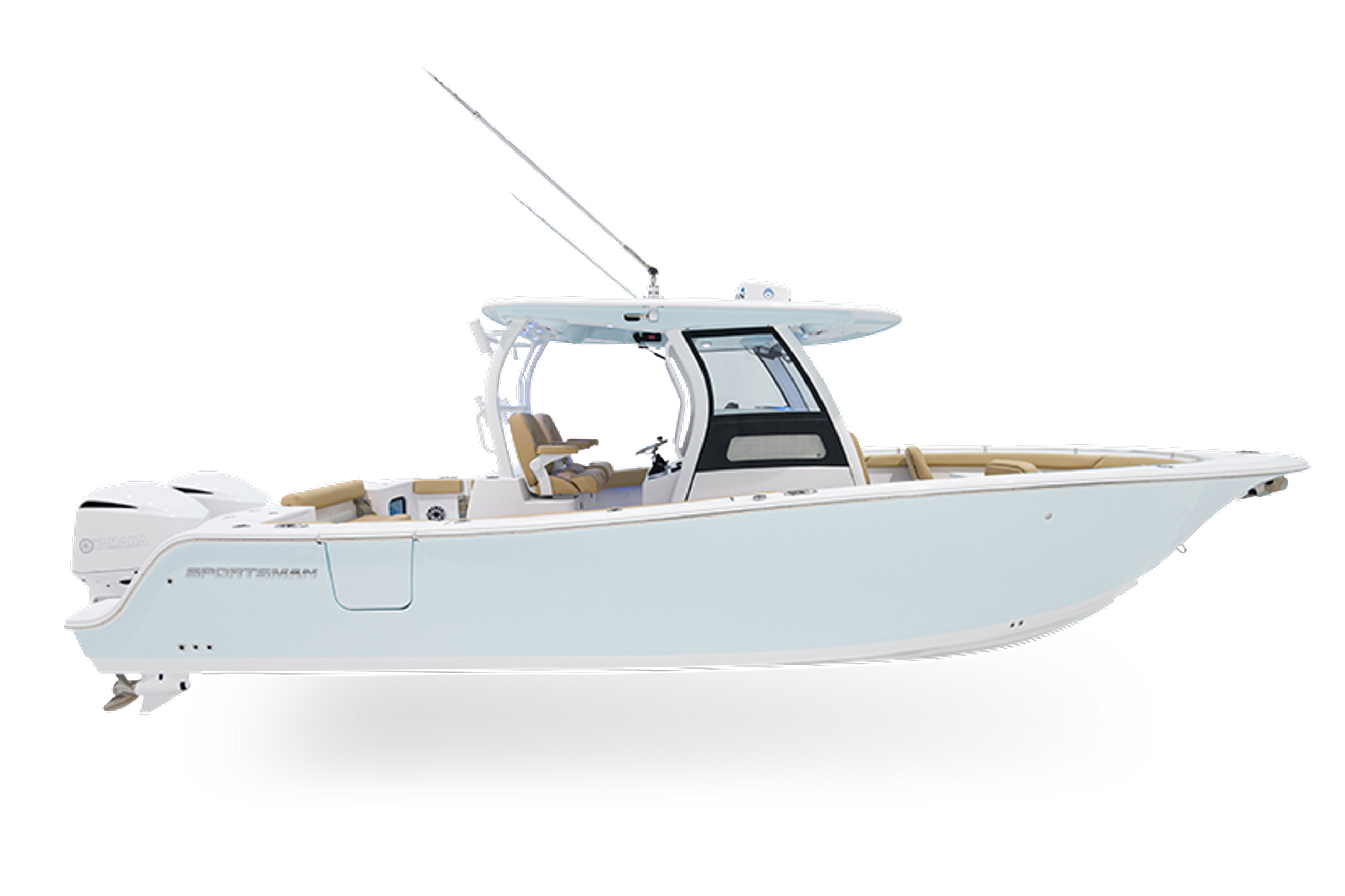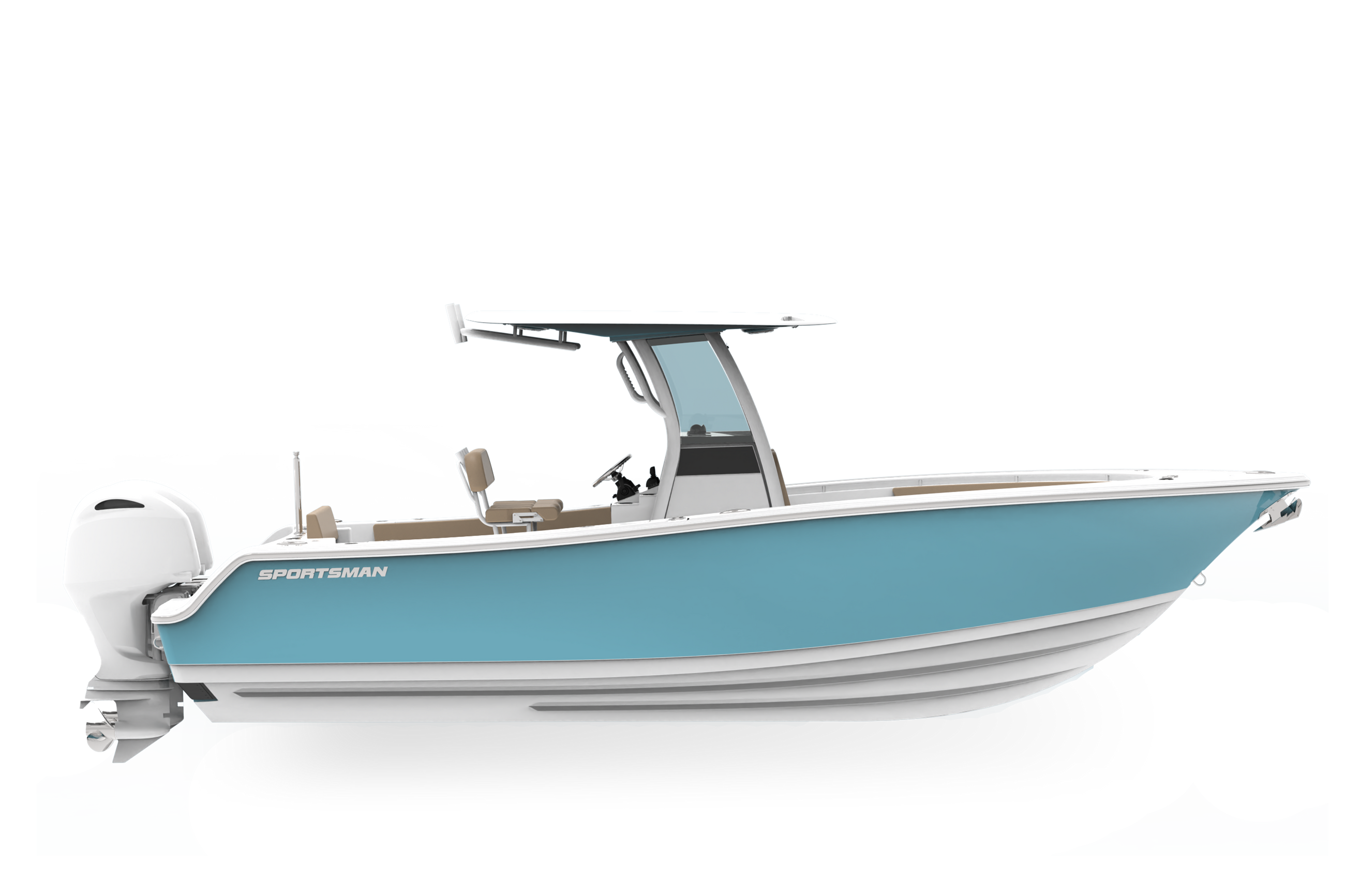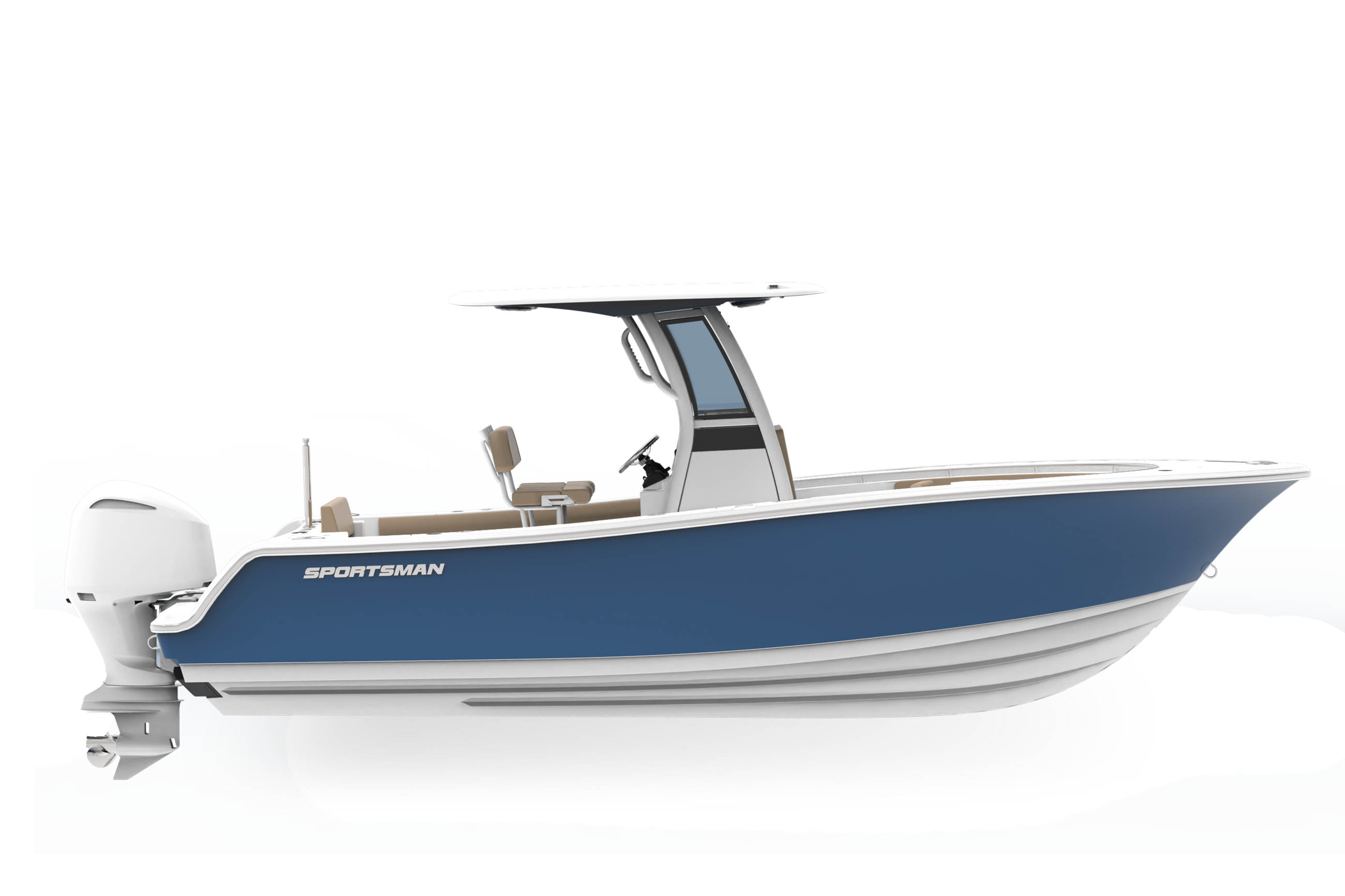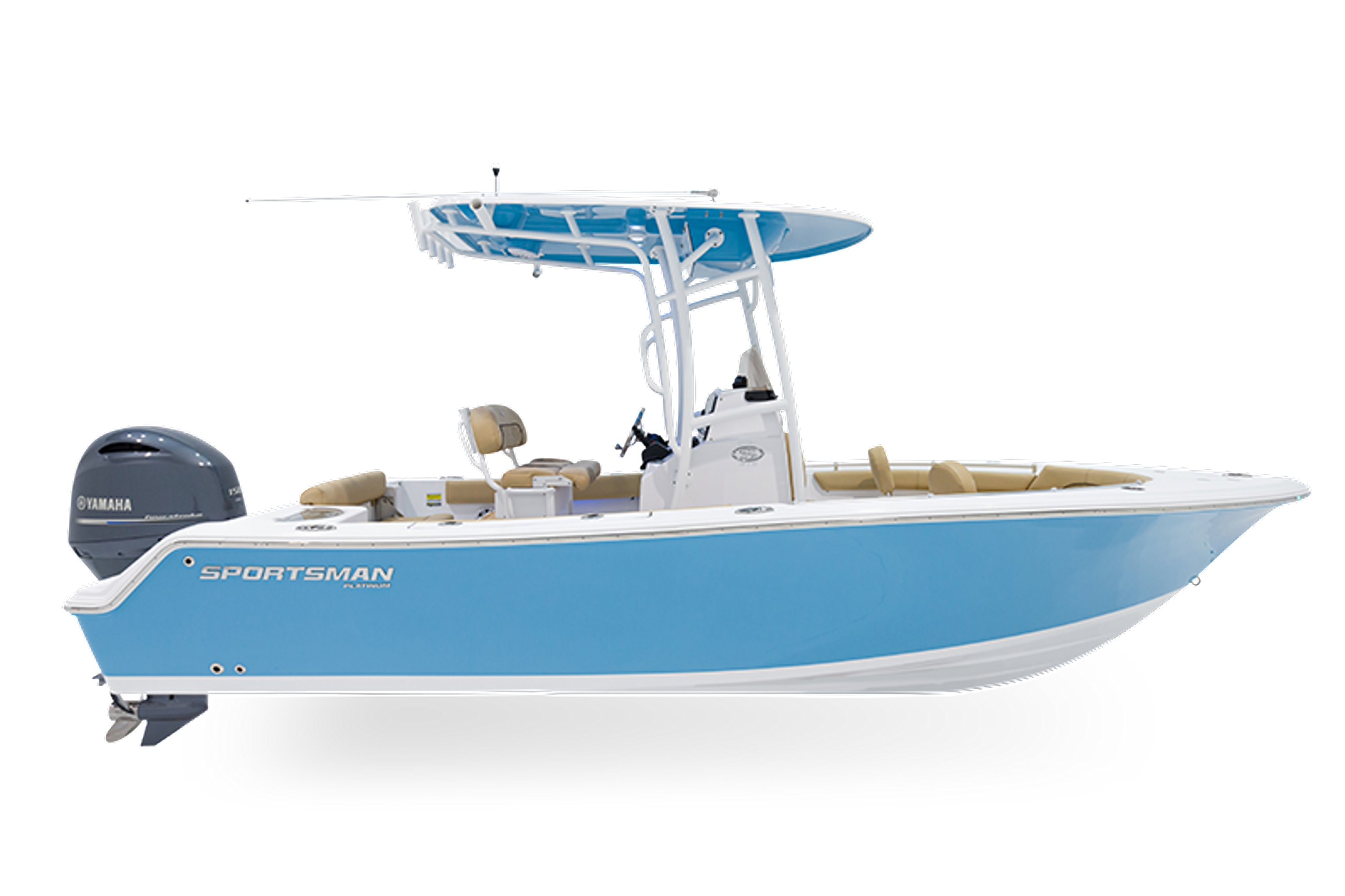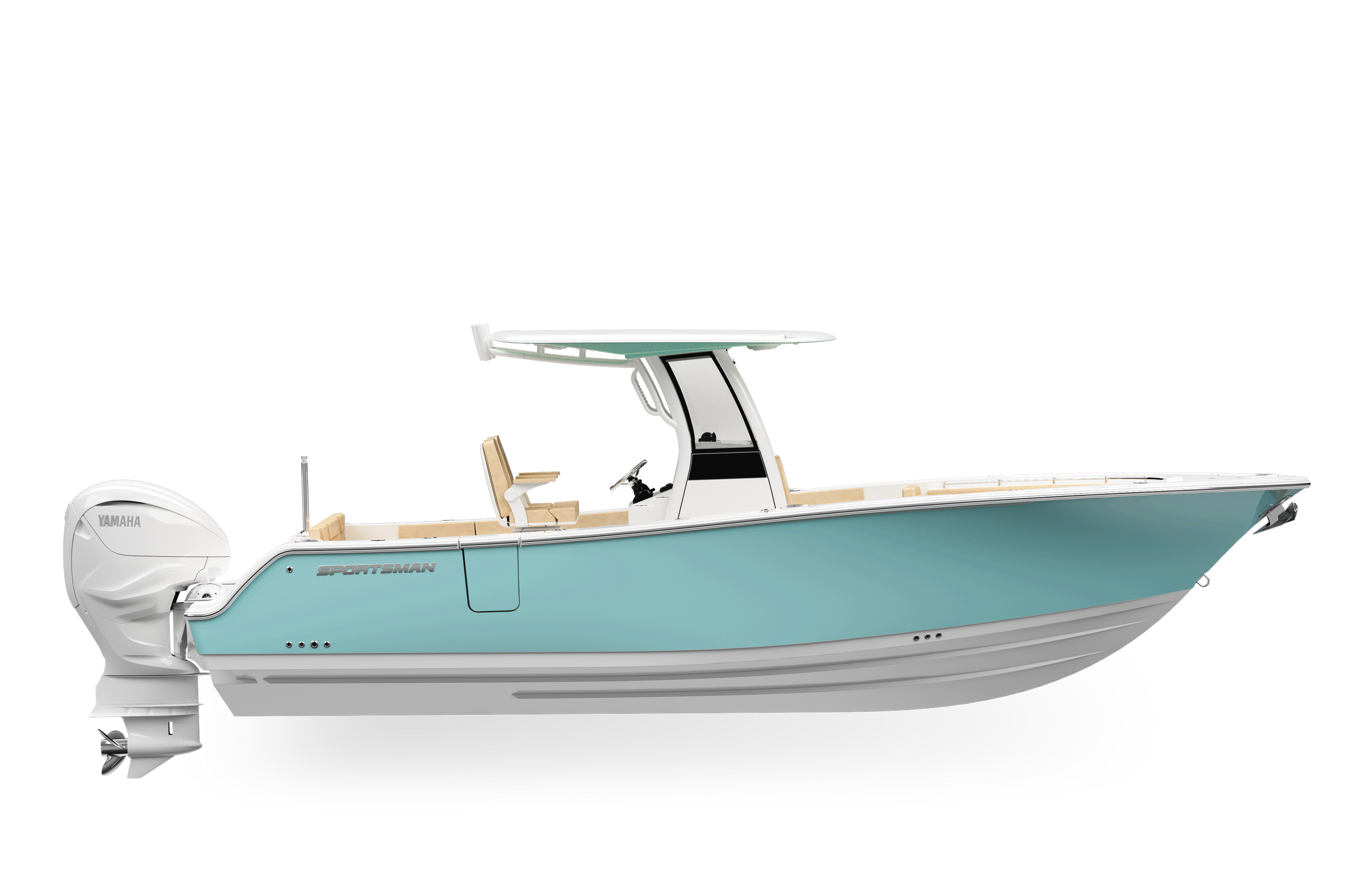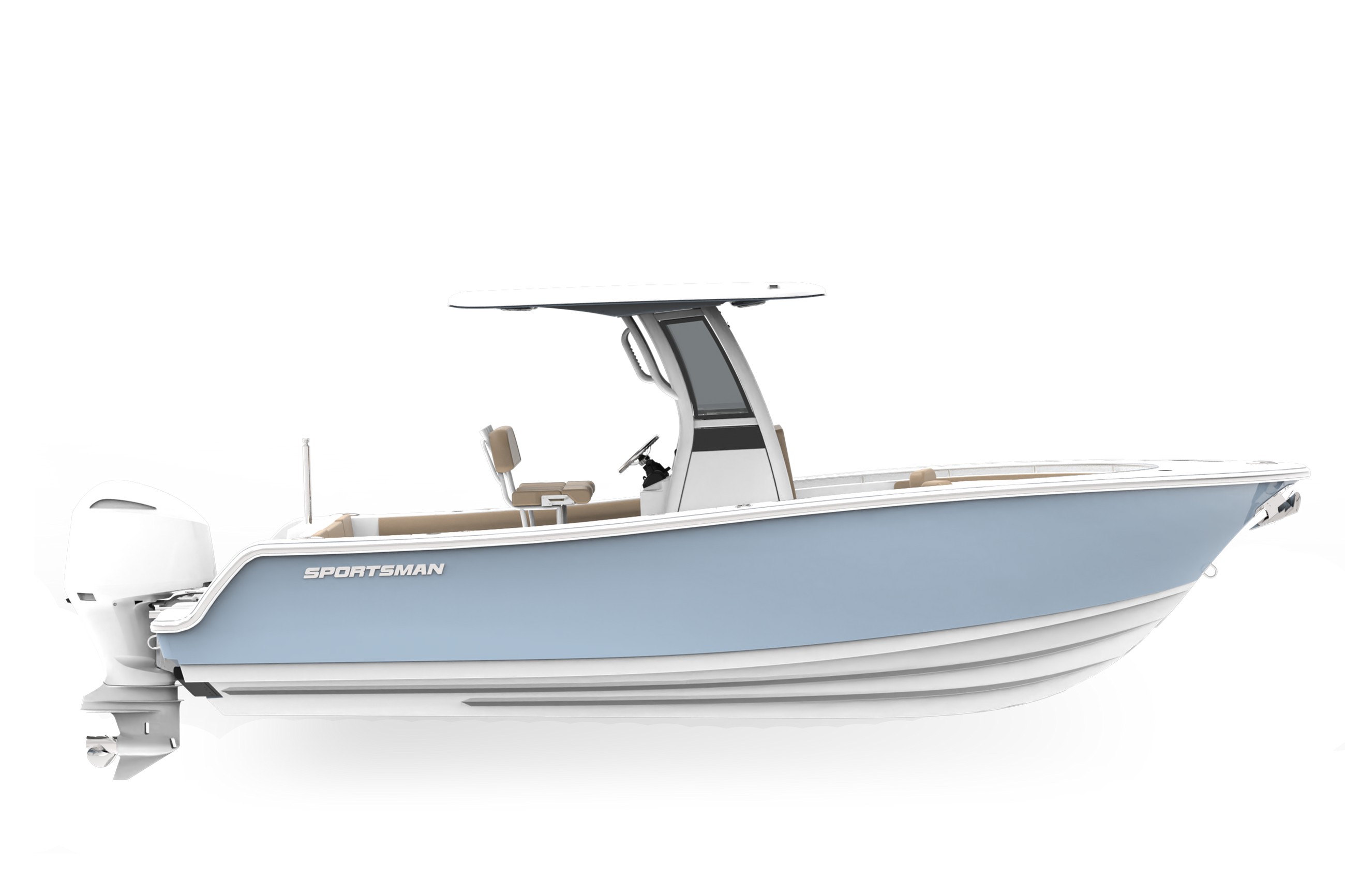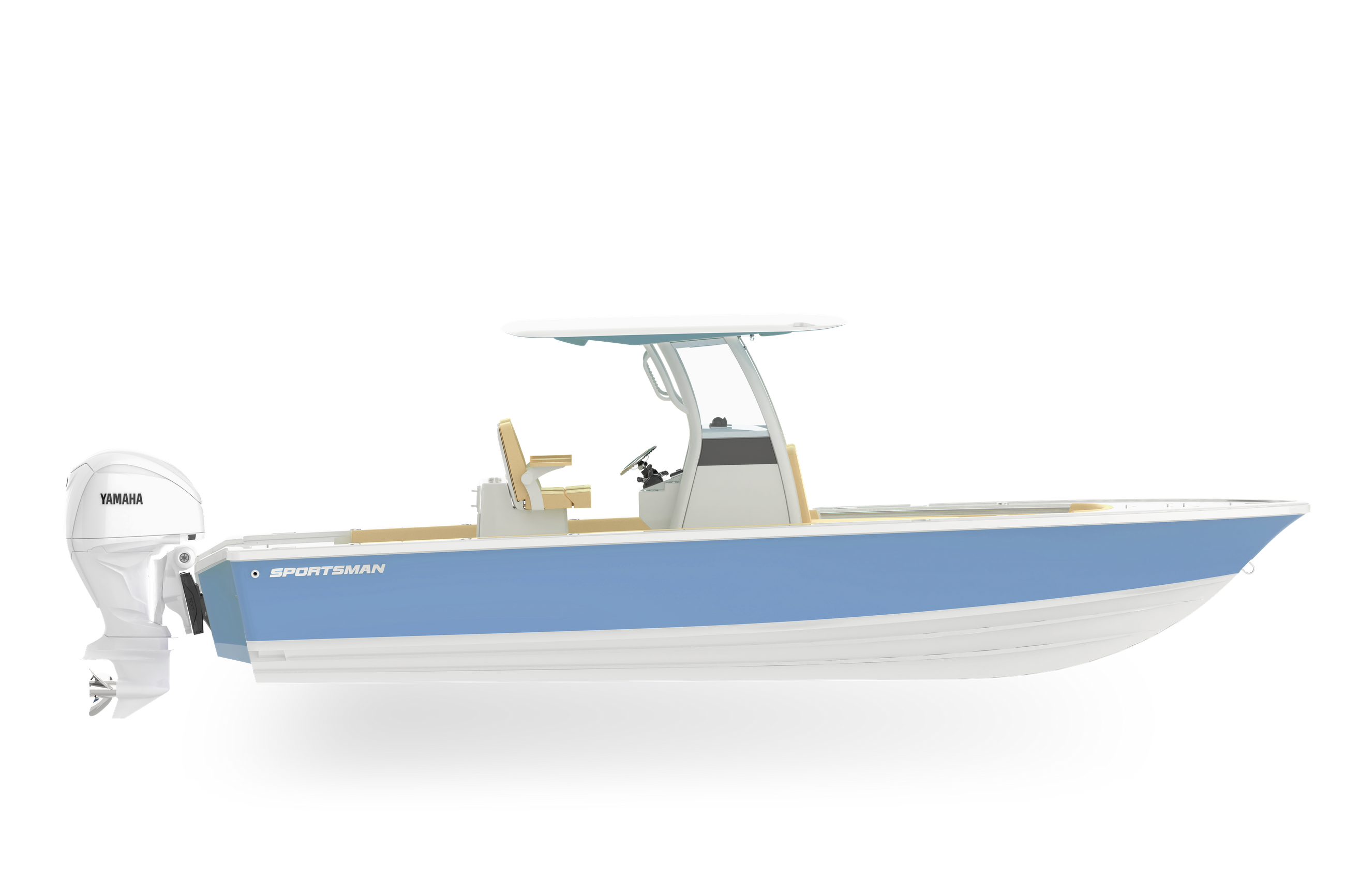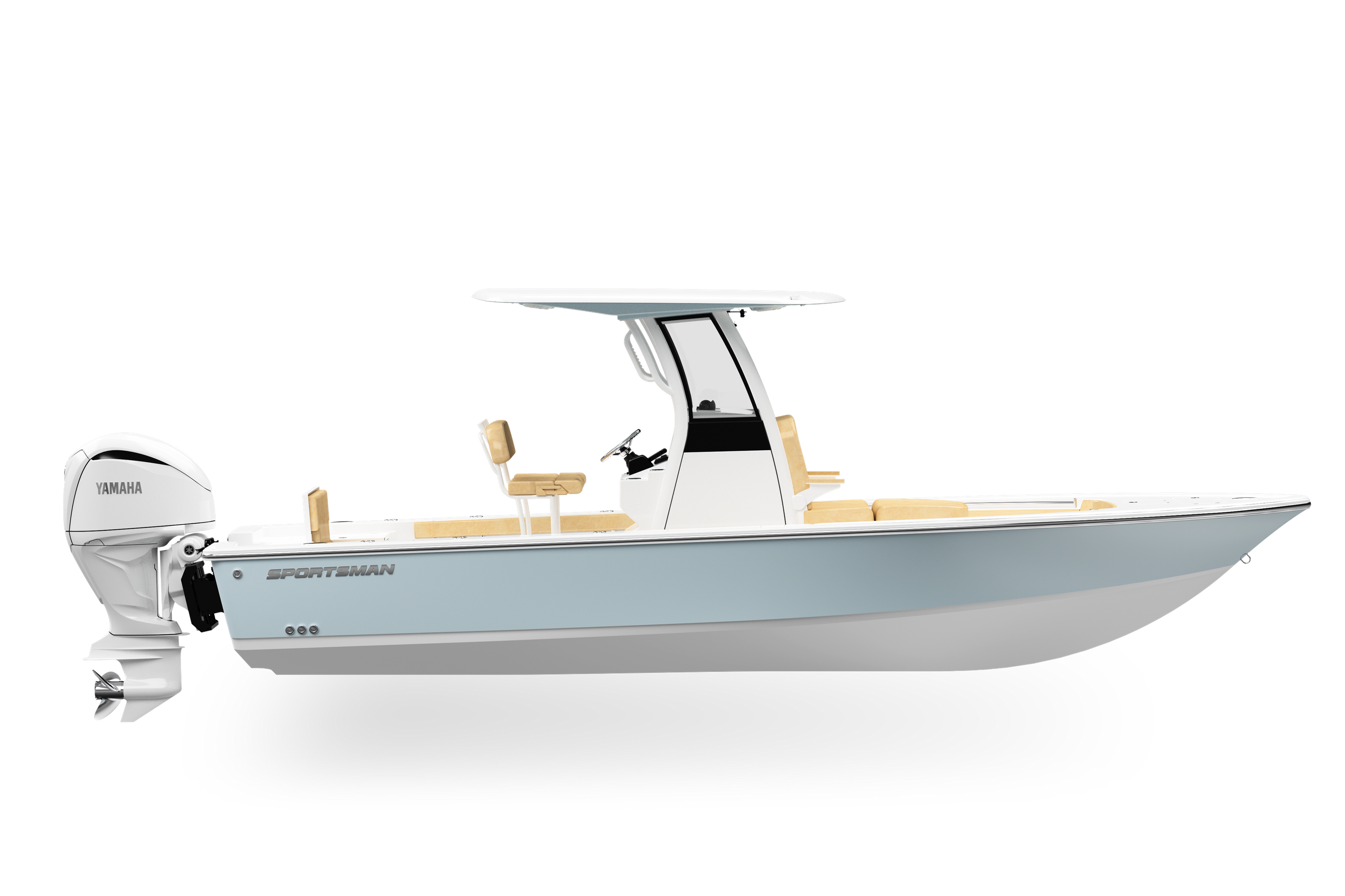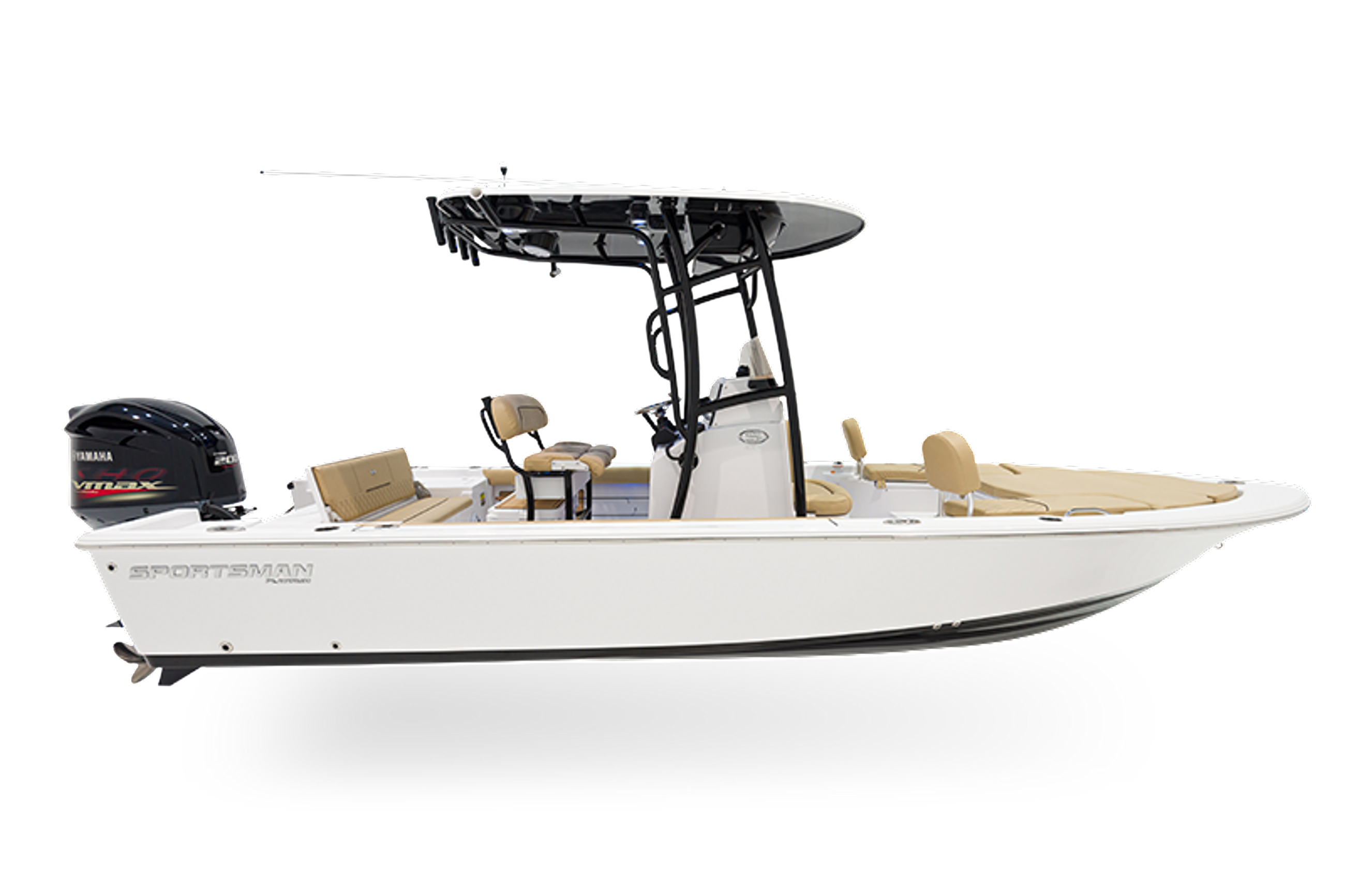How Are Boats Built?
Sportsman Boats require a team of hundreds to be made. Our specially crafted designs are carefully built and monitored to ensure the highest level of quality and satisfaction possible. Our team is proud of the work put into each boat and they are truly created through a team effort. We have put together a quick overview of our boats’ construction to help you understand and enjoy how our boats are made. For additional information and details, please visit our website as well as our new series, Behind the Glass.
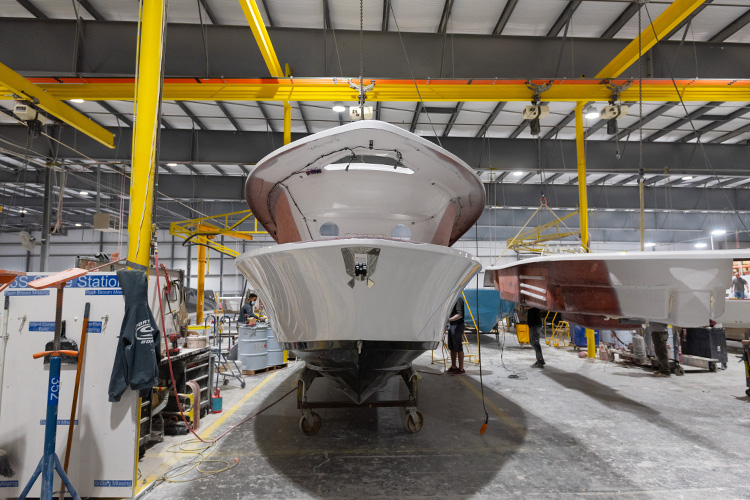
Sportsman Boats require a team of hundreds to be made. Our specially crafted designs are carefully built and monitored to ensure the highest level of quality and satisfaction possible. Our team is proud of the work put into each boat and they are truly created through a team effort. We have put together a quick overview of our boats’ construction to help you understand and enjoy how our boats are made. For additional information and details, please visit our website as well as our new series, Behind the Glass.
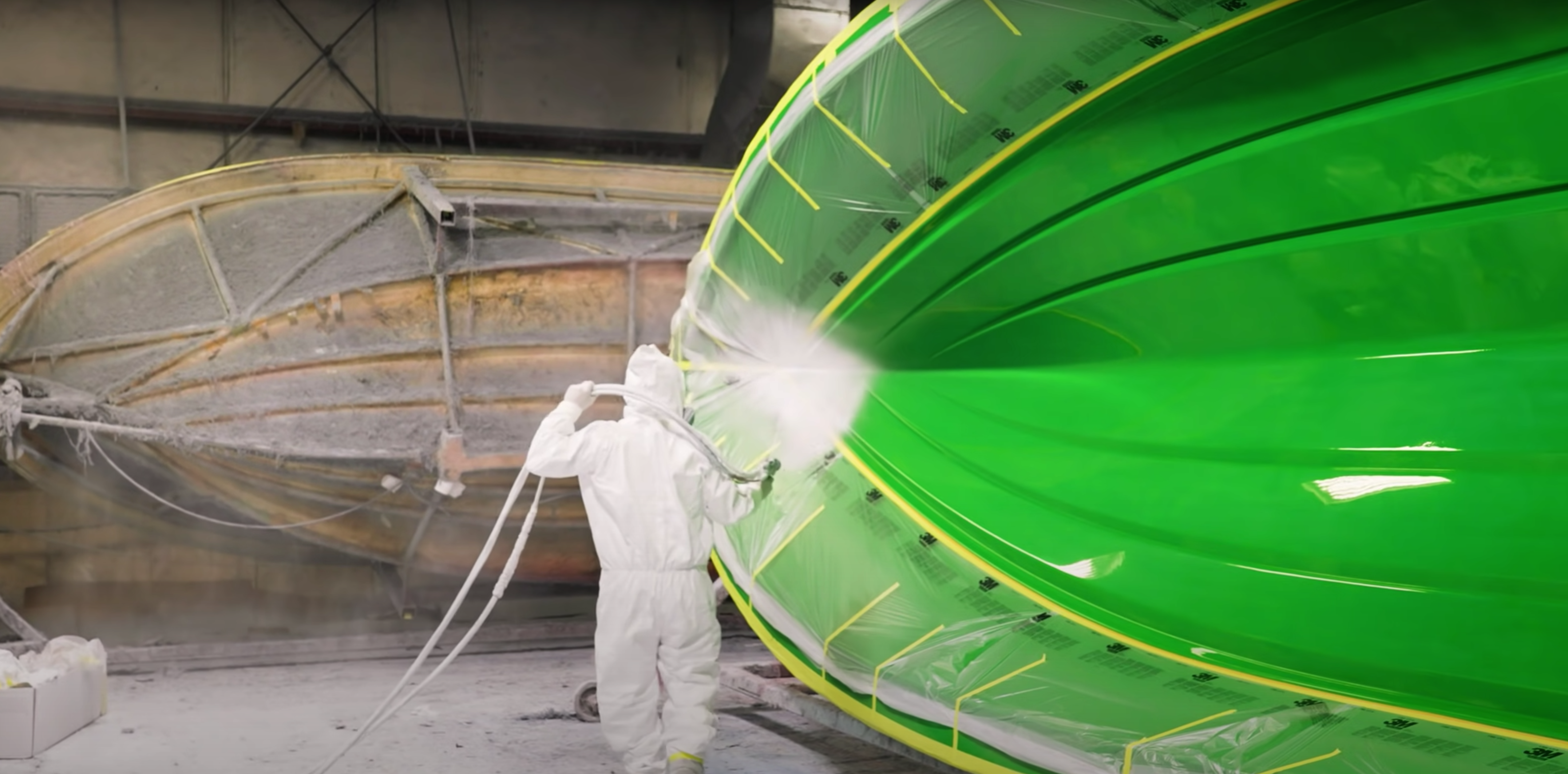
Our boats start with three molds that once cured, form the hull, stringer, and deck; the main structural pieces of a boat.
The hull construction process begins with the mold. Our boat molds go through rigorous maintenance to ensure every new hull meets our quality standards. Boats are built from the outside in, starting with the outside layer. This outside layer is called gelcoat which is a pigmented layer of resin. Gelcoat is one single tough layer and is the color you see on a boat when it speeds by. The skincoat layer follows the gelcoat and is a big defense against water penetration. Sportsman Boats use a vinal ester resin, which is tough and resists blistering. To finish this layer, the team will use special rollers called “bubble rollers” which are small, spiked tubes, to remove any air that was trapped between the first and second layer. This prevents any air voids in the future.
The next step consists of various composite materials which are added to the construction. The hull sides receive a full layer of hi-density PVC foam coring. This is great for sound dampening and adding rigidity to the boat. To finish off the lamination process, bulk fiberglass pre-cut to each unique boat is hand laid. This step helps to ensure proper thickness across the hull. One of the most importance pieces of composite material is at the transom. This area feels the stress and weight of the boat’s engines. In this area, we use a no-rot composite material called Coosa board. It will never rot, mold, or mildew. These materials significantly strengthen the boat while providing better performance and reducing the overall weight.
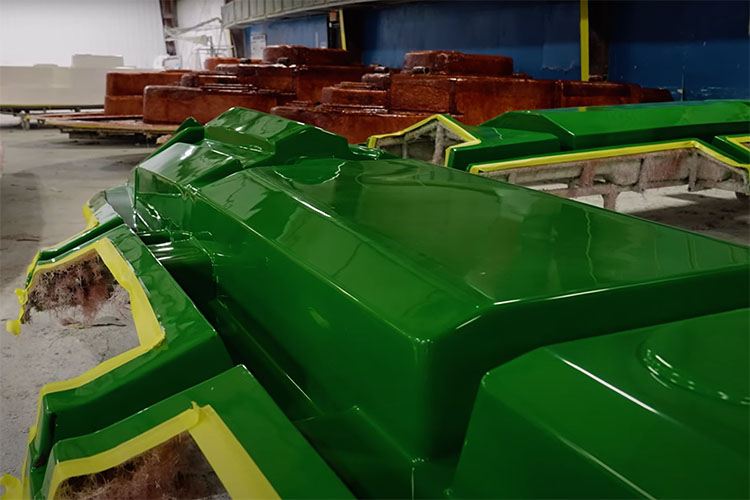
The stringer is the spine of the boat. It sits between the deck and the hull providing the necessary support while housing all the important components built into modern boats. Each Sportsman model has a designated stringer engineered to be an exact match and provide the necessary support. All our stringers are fully structural fiberglass parts that require no foam for rigidity.
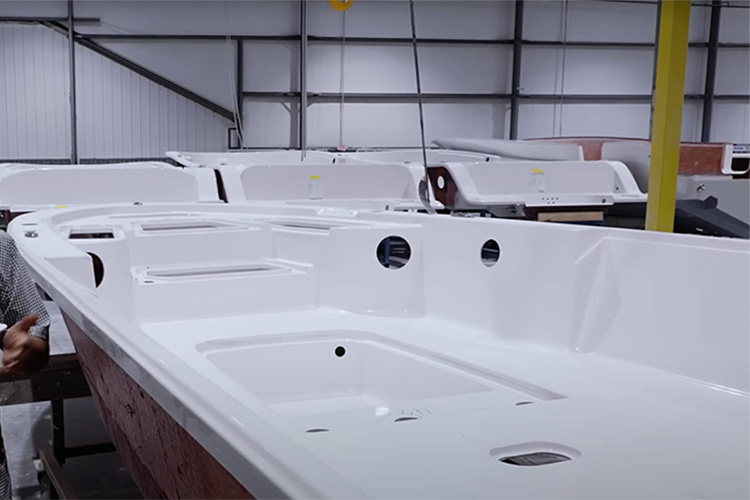
The deck of the boat is the topmost piece, and it gives the boat its layout. It accounts for the features that help you decide what boat is best for you. It is a complicated part, and the final main structural piece of a boat. Just like all of our other parts, the deck starts with a mold. One special thing to note about our deck molds, not found in other molds, is the integrated non-skid textured areas that prevent your feet from slipping when the deck is wet. The fabrication process begins with a layer of gelcoat. This is followed by fiberglass and resin which are simultaneously sprayed, known as the skincoat layer. Composite materials are added to give better strength to the deck without negatively impacting weight
Once these components have properly cured, they are pulled from the mold and move onto the next step. The Stringer is affixed to the inside of the hull using a powerful epoxy called methyl methacrylate (try saying that three times fast). The cavities of the stringer are then filled with foam to offer additional floatation as well as insulation.
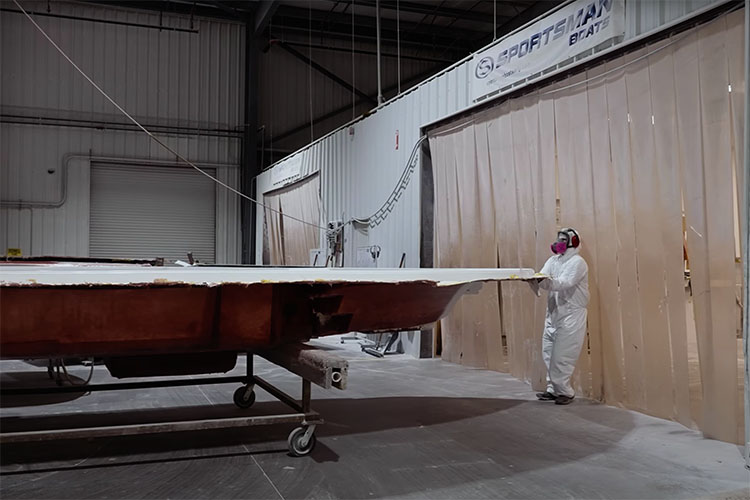
Once the deck and hull/stringer have cured, the move into the cut and grind step to have their rough edges trimmed off and all important holes cut out. Special templates called ‘splashes’ are used to mark the precise location of speakers, rod holders, cup holders, and more. Splashes are made out of fiberglass, and use the final part as the mold. These templates deliver precision placement of all components and is a testament to our closely-monitored standards.
The assembly process is the combines the components of the boat and their installation. Every component has a designed-in spot and purpose. Before the deck and hull are combined, important elements are installed and placed. The gas tank is fit inside the stringer grid. Then the wiring and electrical components are added. The bilge pump, underwater lights, and many additional build-specific parts are installed at this time.
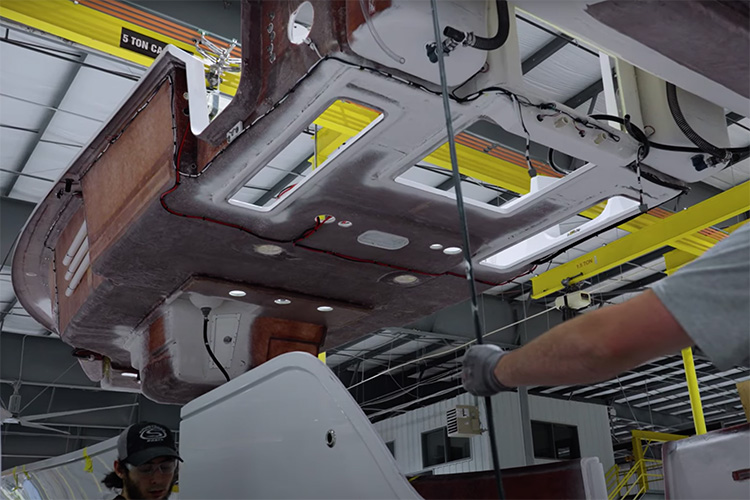
Once all parts have been placed, the hull and deck move to the capping process. Sportsman Boats are joined using bonding putty that adheres the deck to the stringer. The deck is hoisted in the air, the hull is wheeled underneath it and they are married together. The deck and hull are finally pinned together using screws through the special composite materials to ensure screw retention at the pinning flange.
At this point in the boat building process, the vessel is starting to resemble a boat. Elements from our different departments are brought into the main production line and attached. This includes the console, T-top, seat frames, upholstery, electronics, and more. These separate parts are all installed by our incredible assembly team.
Sportsman starts the quality assurance process at the very beginning during the design phase before a mold has even been created. It is continued and recorded throughout each step in the boat building journey. These efforts all culminate in our test tanks. Each boat is hoisted and floated in the tank so our team can check each pump, hose and fitting, as well as all battery components. A passing test here means every single part of the boat is performing properly. At this point the boat is finished and ready to be delivered.
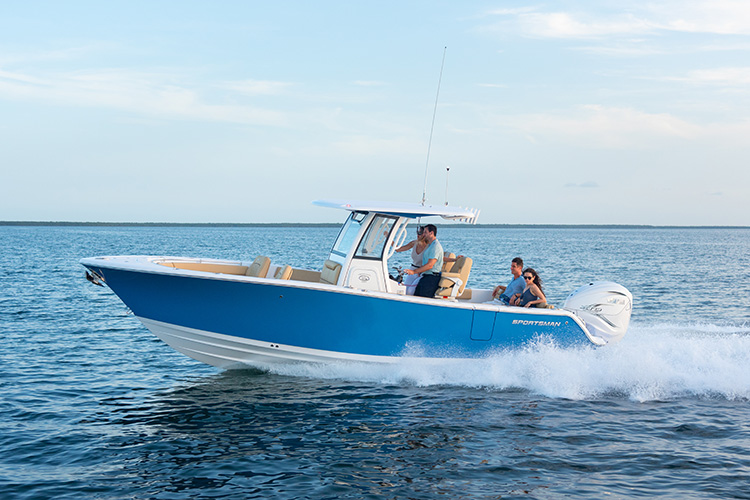
For Sportsman Boats, building a great boat does not end when the boat leaves our plant. Quality is a continuous effort; we internally coined the term “Listen Lead Create”. This means we listen to our customers, lead the pack in innovation, and create the absolute best boat we can.”
For more information on How Sportsman Boats are made, check out our “Behind the Glass” series: https://www.sportsmanboatsmfg.com/series/1-behind-the-glass-season-1
Information pulled from the Behind the Glass Series, and the Sportsman Boats website.

